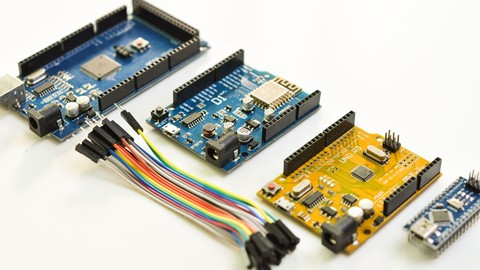An Armstrong number, also known as a narcissistic number, is a number that is equal to the sum of its own digits raised to the power of the number of digits. For example, 153 is an Armstrong number because $1^3 + 5^3 + 3^3 = 153$. Learning how to check for Armstrong numbers in C helps beginners understand loops, arithmetic operations, and number manipulation. It is a classic programming problem that strengthens your understanding of how to break down a number into its digits and perform calculations.

with hands-on learning.
get the skills and confidence to land your next move.
In this tutorial, we will write a complete C program to check whether a given number is an Armstrong number. We will explain every line of code in detail and cover both iterative and recursive approaches. By the end of this post, you will understand the logic behind Armstrong numbers and how to implement it in C.
Iterative Method to Check Armstrong Numbers
The iterative approach involves calculating the sum of the cubes (or nth powers) of each digit and comparing it to the original number.
#include <stdio.h>
#include <math.h>
int main() {
int num, originalNum, remainder, sum = 0, n = 0;
printf("Enter an integer: ");
scanf("%d", &num);
originalNum = num;
// Count the number of digits
int temp = num;
while (temp != 0) {
temp = temp / 10;
n++;
}
temp = num;
while (temp != 0) {
remainder = temp % 10;
sum += pow(remainder, n); // Raise each digit to the power n
temp = temp / 10;
}
if (sum == originalNum)
printf("%d is an Armstrong number.\n", originalNum);
else
printf("%d is not an Armstrong number.\n", originalNum);
return 0;
}In this program, we first count the number of digits in the number using a while loop. This is important because each digit must be raised to the power equal to the total number of digits. Then, we use another while loop to extract each digit using the modulo operator % and calculate its power using pow(). Finally, the sum of these powers is compared to the original number to determine if it is an Armstrong number.
Recursive Method to Check Armstrong Numbers
Recursion can also be used to calculate the sum of powers of digits. Here is a recursive approach:
#include <stdio.h>
#include <math.h>
int countDigits(int num) {
if (num == 0)
return 0;
return 1 + countDigits(num / 10);
}
int sumOfPowers(int num, int n) {
if (num == 0)
return 0;
return pow(num % 10, n) + sumOfPowers(num / 10, n);
}
int main() {
int num, n;
printf("Enter an integer: ");
scanf("%d", &num);
n = countDigits(num);
if (sumOfPowers(num, n) == num)
printf("%d is an Armstrong number (recursive).\n", num);
else
printf("%d is not an Armstrong number (recursive).\n", num);
return 0;
}Here, countDigits() is a recursive function to find the number of digits, while sumOfPowers() calculates the sum of each digit raised to the nth power recursively. Each call extracts the last digit using % 10 and adds its nth power to the sum returned by the next recursive call with num / 10. This continues until num becomes zero.
Common Beginner Mistakes
When writing an Armstrong number program, beginners often make these mistakes:
- Forgetting to count the digits before raising each digit to a power. Using the wrong exponent leads to incorrect results.
- Modifying the original number and losing it before comparison. Always store the original number in a separate variable for later use.
- Leaving out the base case in recursion, which causes infinite calls and crashes the program.
- Forgetting to include
<math.h>when using thepow()function.
To avoid these issues, always count the digits first, keep a copy of the original number, add a base case for recursion, and include the required header files.
FAQs
Q1: Can Armstrong numbers have negative values?
No, Armstrong numbers are typically considered only for non-negative integers. Negative numbers cannot satisfy the Armstrong condition.
Q2: What is the difference between an Armstrong number and a palindrome?
A palindrome reads the same forwards and backwards, while an Armstrong number equals the sum of its digits raised to the power of the number of digits. They are different concepts.
Q3: Can this program handle large numbers?
For very large numbers, consider using long long type instead of int and be careful with pow() function because it returns double. Round or cast carefully to avoid precision issues.
Conclusion
Checking whether a number is an Armstrong number is a great exercise for practicing loops, recursion, and arithmetic in C. Both iterative and recursive methods are useful, and understanding both will enhance your programming skills. Practice with different numbers to strengthen your grasp on digit manipulation and recursive thinking.
References & Additional Resources
- Kernighan, Brian W., and Dennis M. Ritchie. The C Programming Language. 2nd Edition, Prentice Hall, 1988.
- GeeksforGeeks: Program for Armstrong Numbers – Examples and explanations of Armstrong numbers.
- Programiz: C Programming Examples – Beginner-friendly C programs.
- TutorialsPoint: Recursion in C – Guide to recursion and loops.
- Stack Overflow: Handling Large Numbers in C – Tips for safe arithmetic operations.





